Football holidays SSC Napoli
Book your football trip to SSC Napoli easily in four clicks
Book your complete football trip to SSC Napoli. Choose which match, hotel & seat all in one place. No booking fees.
At SCC Napoli, you don’t come to marvel at a luxurious stadium with all the mod cons. What you will get is an unforgettable experience with one of the most exciting teams in Serie A. Napoli has been back in the top flight for several years now, and you can tell by the distinctive atmosphere at the Stadio Diego Armando Maradona. Seismographs from the University of Naples recorded that the cheering showed peaks similar to those of an earthquake. Napoli is one of the few clubs where fanatical supporters take their seats behind both goals, creating a unique atmosphere. The fans of Gli Azzuri support their team fanatically and emotionally for ninety minutes. From the many images on flags and banners in the stadium and beautiful murals in the city, it is clear that club hero Diego Maradona is still revered as a saint.
The trip also gives you time to visit some fantastic tourist attractions. The mighty volcano Vesuvius and the archaeological city of Pompeii are less than an hour away. There is also plenty to do in the city itself to make your football trip an unforgettable experience.
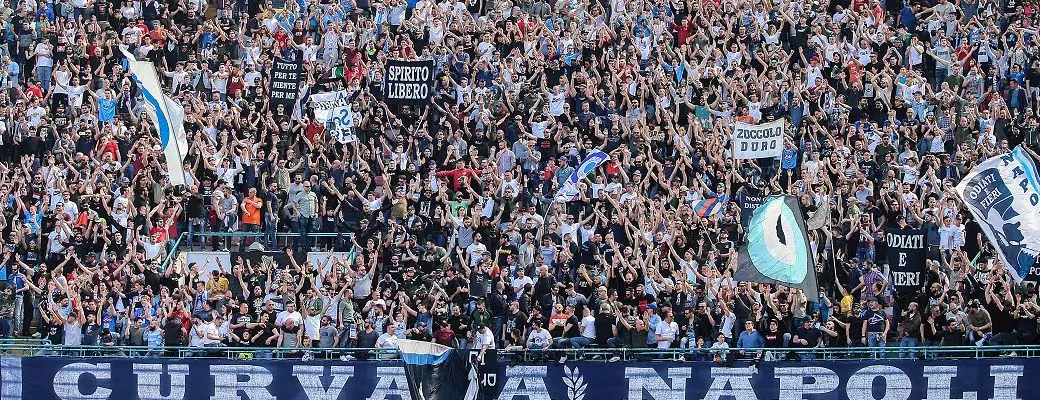
All you need to know for your football trip to SSC Napoli
To make sure you get the most out of your football trip to SSC Napoli, we have selected the best tips for you. From practical information about the Stadio Diego Armando Maradona to the main attractions in Naples and the surrounding area.
- Information about Stadio Diego Armando Maradona, route & tips
- Information about SSC Napoli
- What to do in Naples
The stadium of SSC Napoli: Stadio Diego Armando Maradona
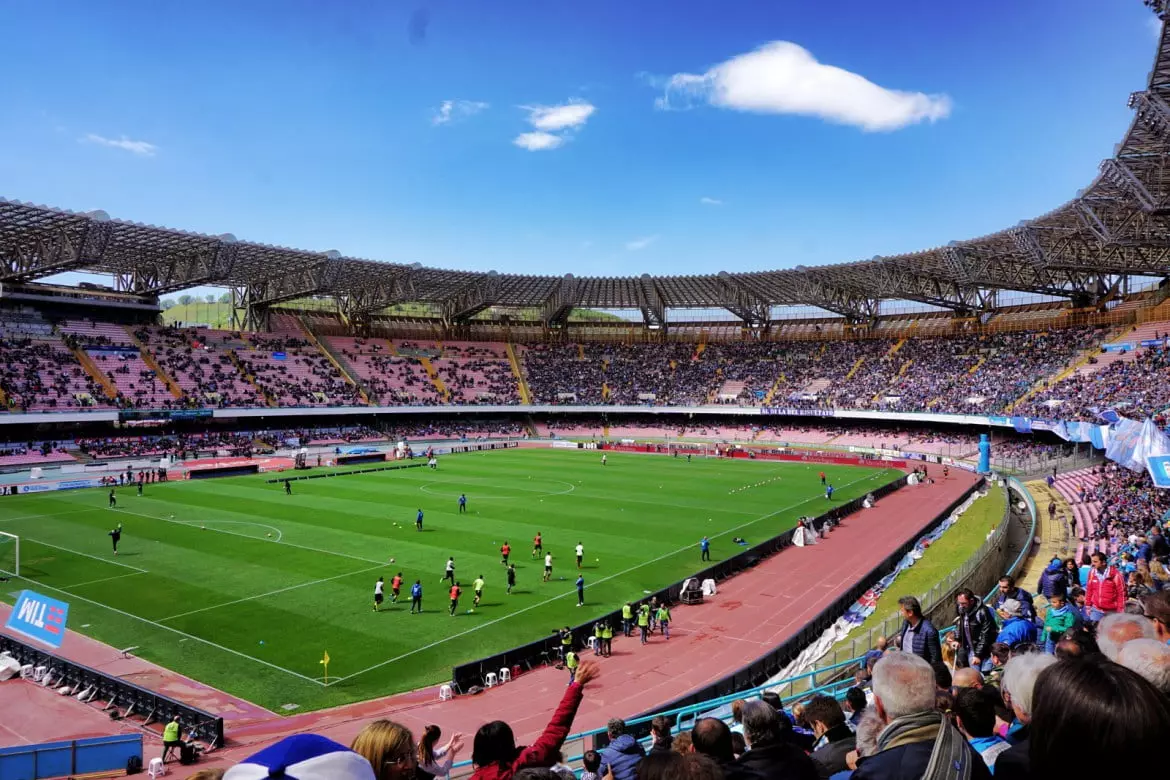
SSC Napoli’s stadium opened in 1959 after the club’s previous stadium was destroyed during the war. It was initially called Stadio del Sole (Stadium of the Sun) and had 87,000 seats. After it was renamed Stadio San Paolo, the stadium hosted the 1968 and 1980 European Football Championships and the 1990 World Cup. After a thorough renovation in 2019, the stadium has 54.726 seats.
The most memorable game in the stadium’s history was the semi-final between Italy and Argentina during the 1990 World Cup. Maradona called on the Napoli fans to support him and Argentina. During the match, they responded with a large banner: ‘Maradona, you are in our hearts but Italy in our blood. Argentina won after penalty kicks; Maradona took the decisive penalty kick.
After the death of club icon Maradona, the stadium was renamed Stadio Diego Armando Maradona on 4 December 2020. However, when visiting, do not expect a super deluxe stadium with all the modern conveniences. Despite the renovation, the stadium is outdated, and therefore the construction of a new home has been under discussion for quite some time. However, the atmosphere is unprecedented, and visitors are lyrical about the fans’ passion for Curva A and B.
How to reach Stadio Diego Armando Maradona?
The stadium is located in the Fuorigrotta district, seven kilometers from the center, and can be easily reached by train, metro, and bus.
With the Metro
The easiest way to get to the stadium is by metro line 2. From the Central Station (Piazza Garibaldi), get on line 2 in the direction of Pozzuoli.
Then you travel along until the stop Campi Flegrei. From here, it is another 600 meters to the stadium.
Trenitalia (the transport company) will deploy additional metro trains before and after the match.
For €1.60 you can buy a ticket that allows you to travel for 90 minutes. For less than €5, you can also choose a day ticket.
Address details
Estadio Diego Armando Maradona
Piazzale Vincenzo Tecchio
80125 Napoli, Italy
Arriving by bus
From Central Station (Piazza Garibaldi): Take bus 151 towards Piazzale Tecchio.
After 25 minutes, you get off at the Augusto-Politecnico stop. From here, it is just a few minutes walk to the Stadio Diego Armando Maradona.
If you are in the center of Naples, you can also board at the Depretis stop, which is about a five-minute walk from Piazza Municipio. Bus 151 will then take you in 18 minutes.
Arriving by train
At the central station Montesanto you take the Ferrovia Cumana train in the direction of Torre Gaveta. Then get off at the Mostra stop. Nice extra: this station has murals of various Napoli icons. From the train station, it’s a few hundred meters walk to the stadium.
From Garibaldi station you can also take the Trenitalia Linea 2 towards Pozzuoli.
You then get off at Napoli Campi Flegrei station.
Map of the stadium
The sides of the stadium are:
- Tribuna Posilipo. This is the main stand where the dug-outs are located. These are the most expensive seats, where the president and the big sponsors have their place. The press tribune is also located here. On the left-hand side, there is the Tribuna Nsida, which is used as a family stand. On the right-hand side, you can find the away section, the Settore Ospiti.
- The long stand opposite the main stand. The atmosphere here is excellent and not as passionate as in either Curva.
- Curva A. The side behind the goal is on the right side of the stadium. On the Curva A are the most fanatic fans; these are the younger fan groups of Napoli. Here, people sing at the top of their lungs for ninety minutes. It is expected you sing along fanatically. A good voice is not required, but knowing the lyrics is, of course, required. There are also exuberant fireworks.
- Curva B. The seats behind the goal area on the left. Here you’ll find the older part of the fan scene, mainly occupied with flags and banners and less with singing. If you’re a tourist and want to bivouac between the fans, the Curva B is the best option, like the atmosphere is more friendly. Although both fan groups have their own identity, there is no competition between the two Curva’s.
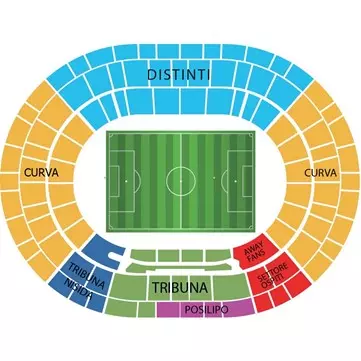
Stadium tour and museum
Currently, the stadium is only open during match days. There is no tour available, nor is there a club museum. This will change soon, though, if reports are to be believed. There are plans for both a Napoli club museum and a Diego Maradona museum in the stadium. It is still Naples, though, so it might take a few more years, of course…
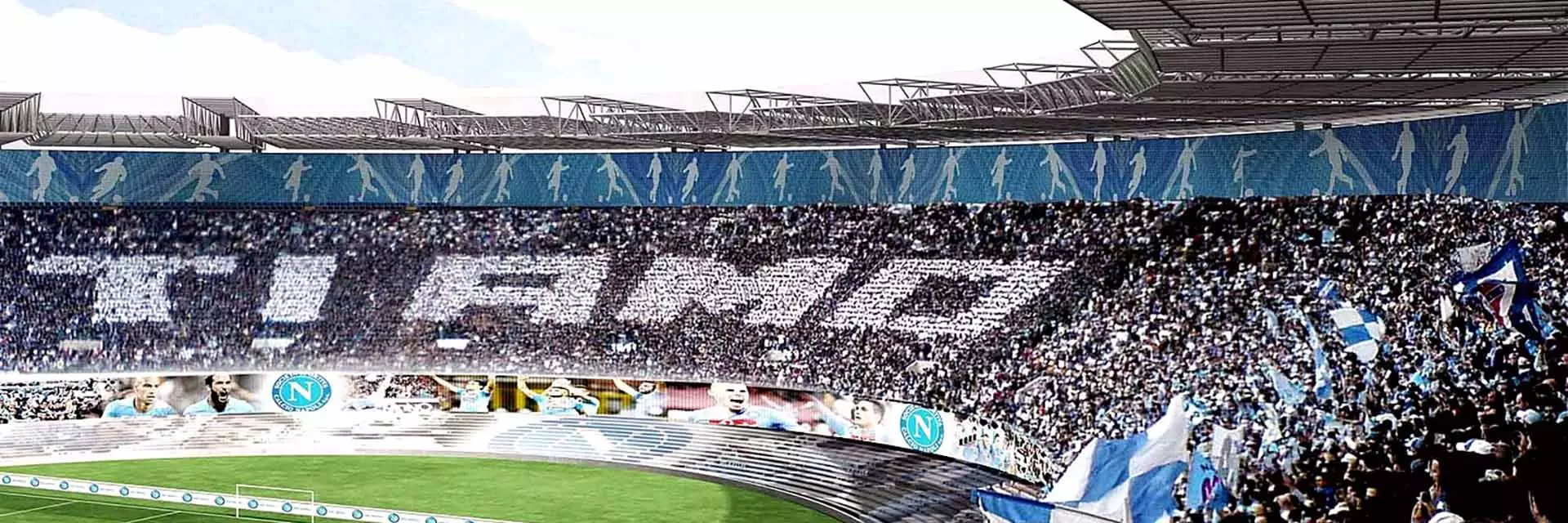
Snacks and drinks near the stadium
Many fans are already hanging around the stadium hours before the game. You can already find food stalls and food trucks selling snacks, sandwiches, and drinks. In the streets around the stadium, there are also numerous bars and restaurants. And don’t forget to order a pizza during your trip. Naples is the home of pizza; the Pizza Margherita was invented here. You’ll find stalls selling ‘pizza fritta’ (a fried pizza) in the streets, as well as the best pizzerias in Italy.
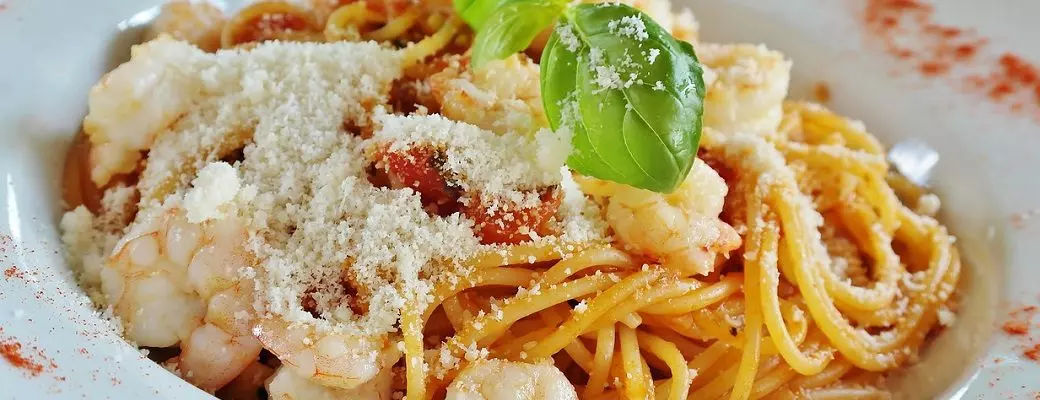
Ristorante Pizzeria Bernadette
This little restaurant at Piazza Gabriele D’Annunzio offers a great view of the stadium. This restaurant is located less than 200 meters from the entrance of the Curva B. Many fans come here for a pizza, squid, or spaghetti with mussels and lemon before the game. Also, after the match, many visitors come for a beer to avoid the first full metros. Opening hours are from 10.00 to 15.30 and from 18.00 to 23.30.

Sinclair Scottish Pub
If you’re tired of Italian beer, this popular Scottish pub (on Via Guido Menzinger, near Medaglie d’ Oro metro station) is the place to go. All meals are freshly prepared, with the sandwiches a particular favorite. There’s also a wide selection of international beers on tap. The many television screens show Italian, English, and Scottish football. The broadcasts of the live Napoli games attract about 300 fanatically attending fans, which makes for a great atmosphere.

L’Antica Pizzeria da Michele
We already said it; you can’t leave Naples without having eaten a pizza. And where better to do that than at this iconic pizzeria in the heart of the city, which has been around since 1870. The scene in which Julia Roberts eats a pizza in the film ‘Eat Pray Love’ was shot in this pizzeria. Due to its popularity, you’ll have to take a number before you can sit down. Only two kinds of pizza are served: the Margherita and the Marinara. Both, however, are of phenomenal quality. The pizzeria is open daily from 11.00 to 23.00 and is located on the Via Cesare Sersale 1, just 500 meters from the Piazza del Mercato and the port.
Information about SSC Napoli
Napoli was officially founded in 1926, although its roots go back to 1904. Then the Naples Foot-Ball & Cricket Club was founded by English dockworkers. After the club merged with another club from Naples in 1922, the name was changed to AC Napoli in 1926.
The first fifty years of its existence, the club had little success. Napoli finished in the middle of the Serie A in good years, but the club was also regularly relegated to the second level. However, in 1962 they did win the national cup as a Serie B club. In the early seventies, Napoli made a name for itself at the top of Serie A, with players like Dino Zoff (the famous goalkeeper) and José Altafini. In 1975, the club finished second in Serie A, and a year later, they won the cup for the second time. Another year later, the club reached the semi-finals of the European Cup 2, in which Anderlecht proved too strong. After that, the club sank back into anonymity.
In 1984, Diego Armando Maradona came over from FC Barcelona at the age of 23. With his arrival, the big successes of the club began. Instead of fighting against relegation, Napoli now competed for the national title. In the seven years that the Argentine played in southern Italy, the club won the national cup, the Italian Supercoppa, the UEFA Cup, and twice the national title. Especially the midfield MaGiCa (Maradona, Giordano, and Careca) was legendary. In 1991 Maradona left after being caught using cocaine. Despite this, the fans continued to worship him as a god. In 2000 the club decided that his number 10 would never be used again as a tribute to his merits for the club.
After the departure of Maradona, the club fell into disrepair. In 2001 Napoli was relegated, and in 2004 they even declared bankruptcy. Thanks to film producer Aurelio De Laurentiis a new club was founded. The club was renamed Napoli Soccer and started over in Serie C (the third level). In 2007, Napoli was promoted to Serie A, and soon the club was back in the Italian top. Although it failed to win a championship, Napoli finished second four times in the last ten seasons and third twice. With new top players like Marek Hamšík, Kalidou Koulibaly, and Dries Mertens, the Italian Cup was won in 2012, 2014, and 2020.
In terms of rivalry, there are terrible relations with the northern teams from Milan and Turin. Because of the lack of a real derby, there is talk of the Derby Del Sole, or the derby of the South, against AS Roma. On the other hand, there is a warm relationship between the supporters of Napoli and Genoa.
The logo of SSC Napoli
Napoli’s current logo has been around since 2006 but has never seen significant changes. It is a light blue circle with a dark blue border, and in the middle, the white letter N. With the last update, some shades and light effects were added to make it a bit more modern. However, the letter N has been in the logo in the same form since 1927.
The mascot of the club is a donkey. This was still a prancing horse in the early years, which appeared on the first logo in 1926. But when in 1927 the club only managed to get 1 point from 18 games, the team was mocking’ i ciuciarelli’ (the donkeys). The fans subsequently adopted it as a nickname.’ I ciuciarelli’ is now also a nickname for the fans of Napoli.

The shirt of SSC Napoli
The uniform of Napoli consists of a light blue shirt with white numbering, white pants, and blue socks. The light color blue was chosen because Napoli is a coastal city located on the Golfo di Napoli. The color of the shirt represents the water of the Gulf. The fans are also called ‘Gli Azzuri’ (The Blues) for this reason.
What to do in Napoli?
In this southern Italian city, it is possible to visit several unique sights in a short time. Top attractions such as the volcano Vesuvius and the Roman city Pompeii, once buried under lava, can be reached within an hour by public transport. But also, the town itself has authentic neighborhoods, beautiful churches, and world-famous museums. In addition, the spirit of Diego Maradona, who is honored as a saint through large murals, drawings, flags, and scarves, haunts the city. Don’t forget to visit the sights below.
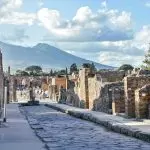
Pompeii and the Vesuvius
Pompeii was a Roman city of 20,000 inhabitants buried under volcanic ash during an eruption of the volcano Vesuvius in the 1e century AD. In the 16the century, the city was discovered, and over the centuries, uncovered street by street. This makes Pompeii the best-preserved antiquity town and perhaps the most important tourist attraction in Italy. With the Vesuvius in the background, you wander past ancient temples, thermal baths, the bakery, the great theatre, and the brothel with erotic paintings on the walls.
As Pompeii is only 22 kilometers from Naples, you can easily visit the city on your own. From Garibaldi central station, take the Circumvesuviana train towards Sorrento. After 40 minutes, you get off at the station ‘Pompeii Scavi – Villa Dei Misteri. ‘ This station is opposite the entrance to the archaeological park. Trains run 2 to 3 times an hour, and one-way tickets cost €6. The price to visit Pompeii is €21, and for €9 extra, you can rent an audio guide. The archaeological city is open from Tuesday to Sunday from 09.00 to 19.00.
For the Vesuvius, you take the same train, but you get off at the station ‘Ercolano Scavi.’ It is highly recommended to book online in advance.
Of course, it is also possible to book a day trip to Pompeii and the Vesuvius at a tourist office. You will be picked up at the hotel and pay about €50 for a guided trip.
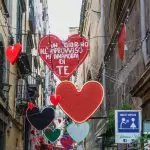
Quartieri Spagnoli
This authentic district houses a little square in the Via Emanuele de Deo that became world news when Diego Maradona died. It was the place where thousands of fans spontaneously came to commemorate their hero.
It was initially the square of the supporter’s group Teste Matte. In 1990 they commissioned a local artist to paint a portrait of their hero. Over the years, the gigantic mural has become the centerpiece of a spontaneously created ‘Maradona museum.’ The Argentine’s career in Neapolitan service has been depicted through flags, scarves, drawings, and photographs. After his death in November 2020, the square became a memorial.
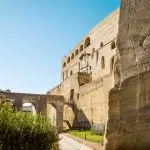
Castel Sant’Elmo
The old fortress of Sant’Elmo towers high above the city and offers a phenomenal view of Naples and its surroundings. From here, you can see the entire Bay of Naples, the Tyrrhenian Sea, Mount Vesuvius, and the surrounding area of the Campania region. With 414 steps, it is a tough climb to the top, but fortunately, you can also take the cable train. Just below the castle is the impressive monastery Certosa di San Martino. Here you can wander through long corridors, the church, and a beautiful garden. You reach the fortress by metro line 1 to station Vanvitelli, then you walk a slight uphill. The entrance is €5.
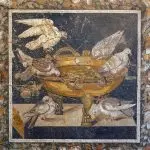
Museo Archeologico Nazionale di Napoli (MANN)
The National Archaeological Museum is one of the most important museums of its kind in the world. It owes its world fame to a unique collection of objects from ancient times. If you cannot visit Pompeii, you can see many finds here, such as frescoes and mosaics. Through computer animations, photos, and film footage, it is shown how the city’s destruction was done. You will also find casts of people who tried to bring their belongings to safety before the erupting volcano.
The museum is open from 09.00 to 19.30 (closed on Tuesdays), and tickets cost €15. Two adults pay €26 (family ticket). The museum is easily reached by metro line 1 (stop ‘Museo’).